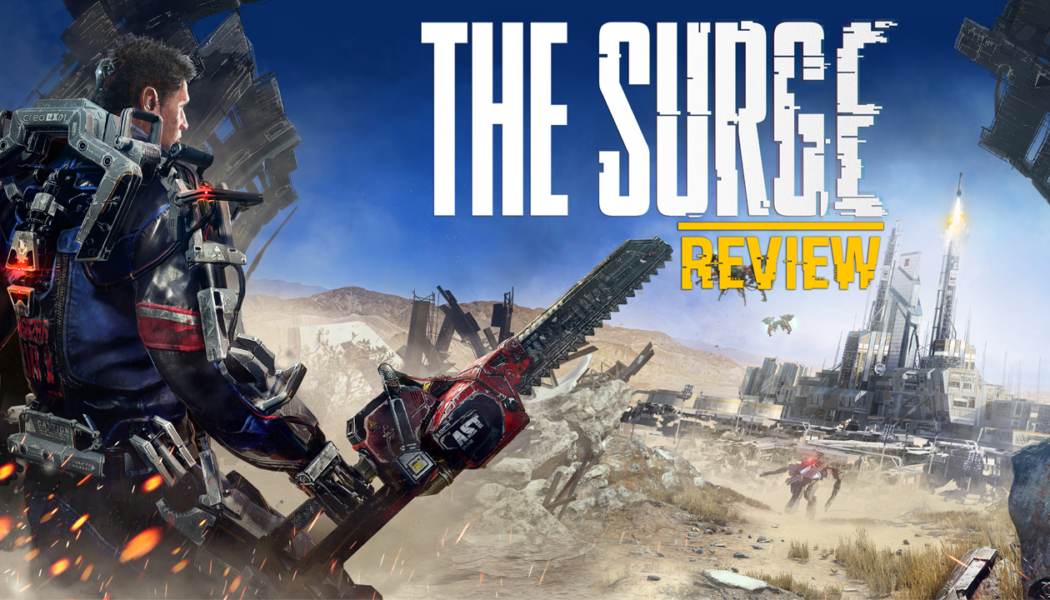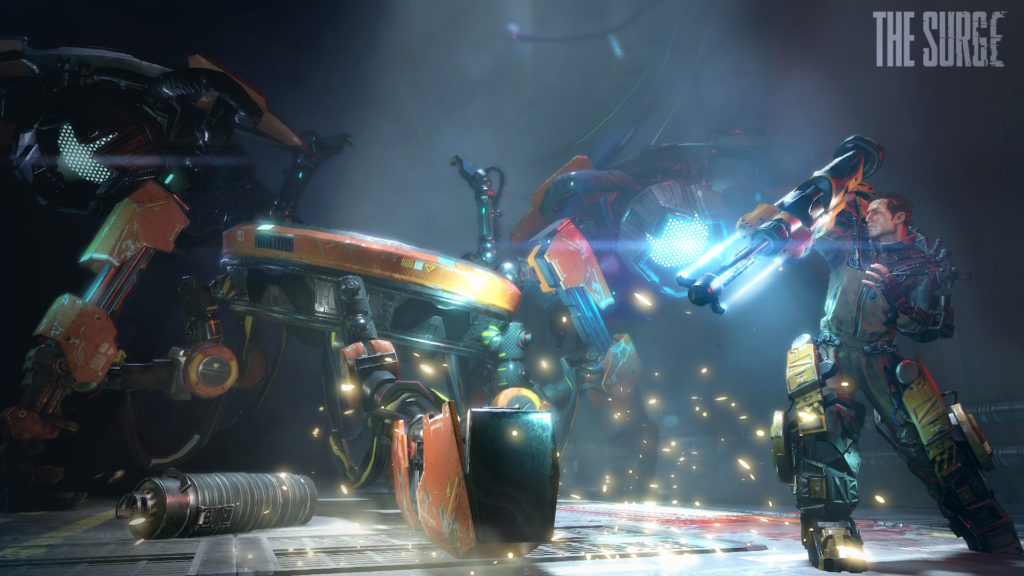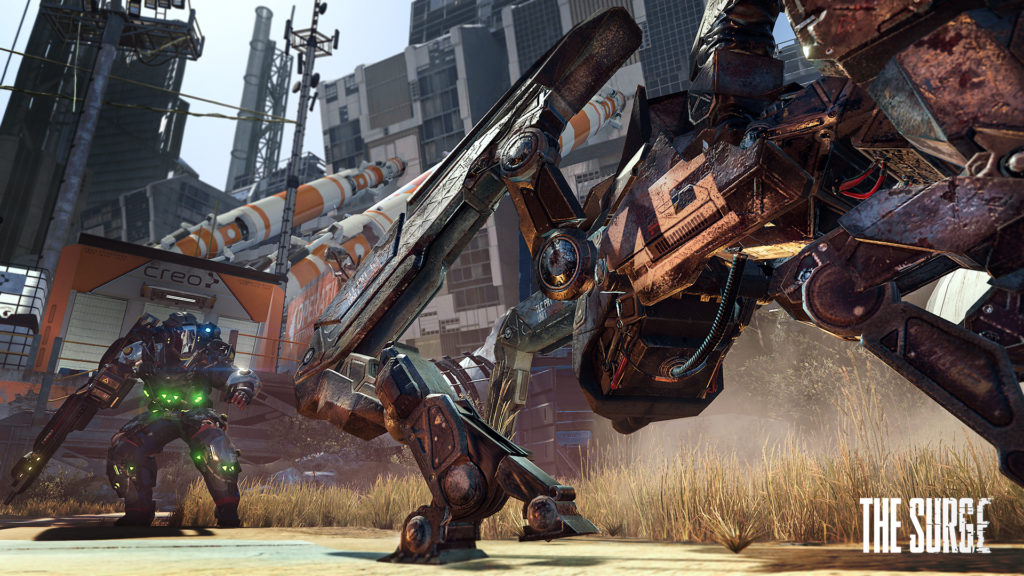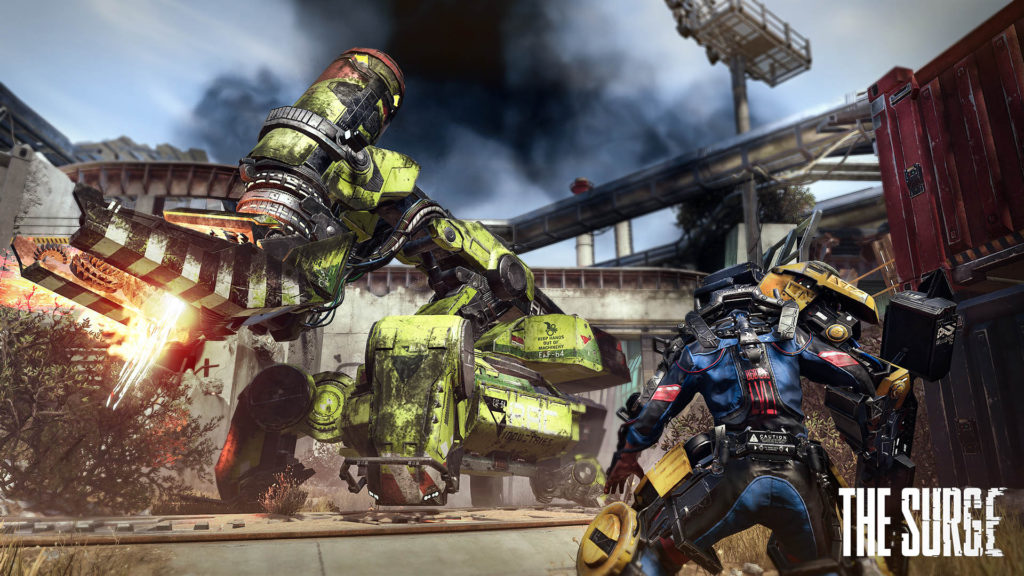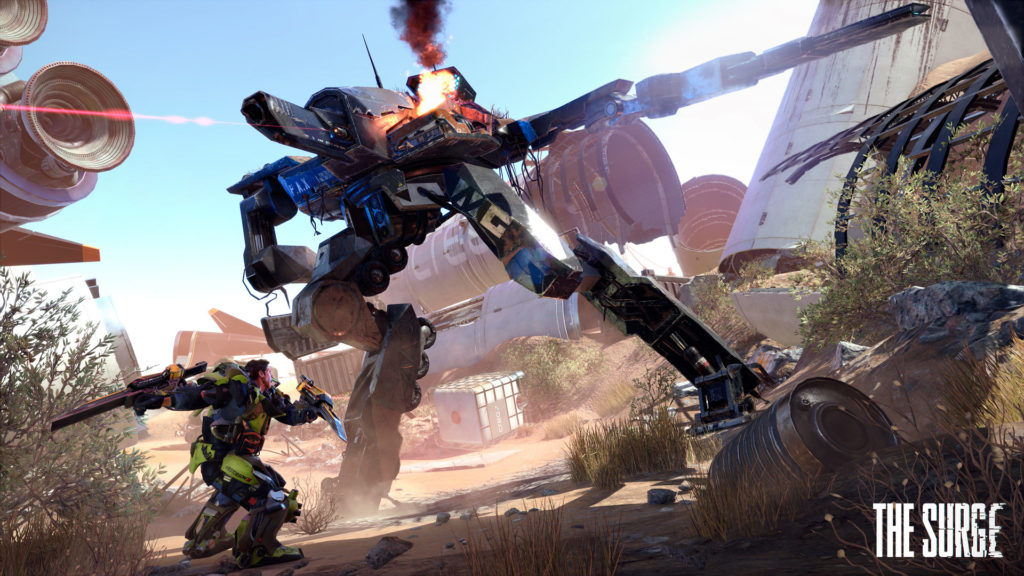Its easy to compare any game with punishing difficulty to the Souls games, but saying that difficulty is what the Souls games do best would be selling them really short. Labyrinthine level design, oppressive atmosphere, environmental story telling, epic boss battles, well balanced combat that offers a challenge while remaining fair, are what lie at the soul of these games. It’s not something that is easy to replicate, and previous attempts have either been substandard or unsatisfactory. Lords of the Fallen was one such attempt by Deck 13, and The Surge is a testament to learning from failure, while adding whole new systems that, at times, surpass the very games that it takes inspirations from.
The Surge is set sometime in the near future in a world ravaged by war and global warming. CREO Industries has offered to set things right with the promise of a brighter future, powered by technology that the company is developing. Part of that technology are “Rigs”, powerful exo-skeletons built to enhance human ability beyond its natural capacity. CREO is set up from the get go as a shady corporation, with vested interests. However, the exo-skeleton rig that it offers is exactly what brings our protagonist, Warren, seeking employment at the company. The opening moments of the game set up a strong premise as you move through the train station into the CREO complex. Things go wrong immediately afterwards, with Warren’s Rig Installation taking a bloody turn. Lucky for Warren, he’s now stronger and more enabled than ever, though the same can’t be said for the CREO complex and those working in it. It’s now up to you to discover what has gone wrong, as you make your way deeper into the mega-corporation’s massive facilities.
The combat is simple to begin with – you have two basic attacks – vertical and horizontal. You can hold down either attack button for a charged attack. You can also block attacks, though there are no shields in the game, and you’ll be blocking using equipped weapons, and it’s usually only effective against low level enemies. Attacking, blocking, dodging (no dodge-rolling), jumping, and sprinting use stamina. You gain tech scraps by killing enemies, or by picking up particular items, and you use them to level up. You drop all scraps when you die, and have to return to where you dropped them (in a stipulated time) without dying, or you lose it. There are Operations, which are basically safe rooms where you can upgrade your Rig’s core power, craft new items and gear, upgrade your gear, equip implants (we’ll talk about them in a bit), and talk to any NPCs you’ve helped in that level. There’s only one Operations room per level, and, as you explore, you’ll find numerous shortcuts that lead you back here. When you die, you respawn back at Operations. So far, so Souls.
The main difference in the combat is the ability to target and dismember particular body parts of enemies. An energy meter fills up with subsequent attacks, and at a particular point allows you to execute a deadly finisher – weapon-specific gloriously-bloody animations, with a chance to gain additional scraps, crafting materials or gear specific to the targeted part. You can target unarmored parts to go for a quick kill, or if you see a weapon or armor on an enemy that you want for yourself, you can focus attacks on the part for a chance to claim it for yourself. Depending on the weapon and armor equipped, you can be a slow hulking beast capable of doing heavy damage with each hit, or a fast moving nimble fighter, darting in and out to strike fast, following up with multiple attacks. The combination of light, medium and heavy gear works really well, and is extremely well balanced to offer different styles of play according to your liking.
The weapons range from staffs made of industrial pipes and pistons, hydraulic presses jerry-rigged as hammers, forklifts turned to fast slashing blades, and similar makeshift weapons, all repurposed using machinery found at the high tech factory. Different weapons have their own attacks combos, stamina usage, and energy meter built-up. Learning them is key to survival, as mashing buttons and committing to an attack combo without planning is usually the quickest way back to Operations. Equally important is studying enemy attack patterns, as some of their attacks are longer combos, and jumping in to attack at the wrong time will prove fatal. Some enemies sprint from afar and jump at you with slashing attacks, while others approach slowly but swing hard. Apart from human enemies, you’ll come across small drones, four legged machines (and variants of them), robots, and rogue AI.
You’ll hardly ever find enemies in hordes, but almost every enemy is capable of easily killing you in a few hits, and it’s always advisable to lure them out one at a time. You’ll eventually get a drone of your own that you can customise for specific types of attacks (they need energy to be able to perform). Sadly, the emphasis on individual enemy encounters also means that the game has fewer boss battles. There are only 5 main bosses, and it does feel slightly unsatisfying. The bosses themselves are fun to battle with, and take time to study and understand. Some will switch up attack patterns mid-fight, and require you to adapt on-the-fly. One boss had me sliding in to get behind it and land a few hits before jumping away, while another had me lunging to attack, since sliding would mean that I would get trapped beneath it, leaving me vulnerable to getting squashed. Trust me, getting sat on is not all that it’s made out to be. I love how the game makes such good use of different attack animations, and gives them importance instead of just being a flashy gimmick.
Implants are special enhancements that can be added to your rig, and come in three forms – Hardwired, which are equipped only at Operations, Hot Swap, which can be switched up anytime, and Injectables, which act as potions and temporary boosts. Some Implants give you basic abilities as being able to see enemy health (yeah, you’ll probably keep that one on), while others add extra health, stamina boosts, damage buffs, and so on. Further on, you’ll find implants that allow you to use built up energy to heal yourself, and this can really change how you play the game. Certain weapons have increased stamina gain, and combining this with the mentioned implant will allow you to keep healing yourself using energy unlimited times. This then dictates the type of weapon you lean towards, and for the first time in an action game I found myself using slow, heavy weapons. The Implants are a fantastic addition to the game, and, if used cleverly, can make a big difference in how you play the game.
You level up by spending tech scraps, and increasing your core power. Your gear and implants use core power, and you can only equip as many as your rig’s core power allows. This acts as equip load, while making sense with the game’s premise. With so many systems constantly interacting and balancing with each other, The Surge is really well made, polished and balanced, specially when it comes to the core game systems and combat. There are so many factors for the player to consider, and none of them feel throwaway. Weapons have different proficiency scaling to them, and the more I used them the more effective I got with them. In a simpler game, this would’ve meant that I would end up using a favored weapon throughout the game. But the way energy gain, implants, and core power worked together made me switch between different weapons and gear so that my journey through CREO’s complex could be somewhat less strenuous.
CREO’s complex is absolutely massive, and the game does an excellent job of conveying that sense of scale to you. As climb up stairs on the sides of seemingly endless chasms, or trudge across narrow walkways and see huge machinery still working in the distance, it’s hard not to be left impressed. Even more impressive is how many of these paths you go around will open up shortcuts where you least expect them to be, and lead you back to Operations. The labyrinthine aspect of the level design is at par with the Souls games, coming really close to how good it was in the first Dark Souls. The levels themselves are split up, and connected by train stations. I really wish that the developers had designed one massive interconnected complex, but I can only imagine how difficult that endeavour would have been, be it limited by creativity or the power of the game engine. Also, after finding the first few shortcuts, some of them can start feeling familiar, with them looping around identical looking back-paths, repairs ducts, etc. It’s not really a problem, but the element of surprise fades a bit. While the first and second levels have a distinct look to them, the later levels fail to stand apart as much. Levels do look increasingly ravaged as you venture further, but they lack a more distinct look.
As you keep exploring, you’ll find huge television screens that blare mega-corporation propaganda which add to the backstory and tell you more about CREO. You’ll also find audio tapes, other NPC characters, and tons of environmental details (like graffiti, posters, etc), all of which lend more life to the world. The voice acting and writing are actually pretty damn good, with NPCs speaking with conviction, PSAs sounding very corporate and formal. Some audio files would simply have small tidbits of personal information that made me care about the people who worked here. The main story, however, doesn’t live up to the how well the game started off initially. It’s not bad, but it’s nothing that you’ll remember once you’re done the the game. But, to be fair, the combat, gameplay and the level design easily kept me going. I wouldn’t even listen to audio tapes soon as I found them, instead moving on looking for the next fight, the combat is just that great.
I also want to give a mention to the excellent menus in the game, which are clearly very carefully crafted. Every single option in the menu, including the control scheme, has proper descriptions alongside it. The developer’s passion and love for what they have created is plainly evident.
The Surge is not sci-fi Souls, and it’s much more than a Souls-like. There are well refined combat mechanics, excellent inter-play between gameplay systems, challenging enemy encounters, compelling level design that encourages exploration to discover shortcuts, that will keep you playing for hours. The story may not be the best, but that’s forgiven when you’re walking around in a mech suit, slashing up enemies with forklifts fitted on your arms – Wolverine style.
Register with us for the best in gaming, and join us for video game discussions on our forums.

